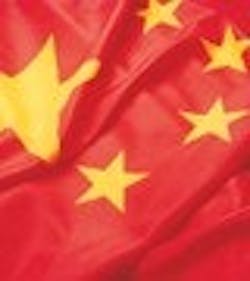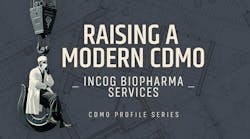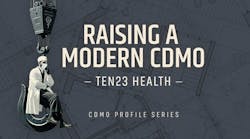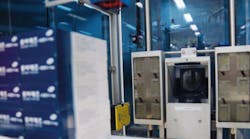Changes in the competitive landscape, notably Chinas entry into the World Trade Organization (WTO) in 2001 and the development of a regulatory system through the establishment of Chinas State Drug Administration (SDA, now called the SFDA), are fueling the growth of contract manufacturing and contract research. Also driving this growth are the hai gui, Chinese nationals who return to China after gaining professional experience in Western biopharmaceutical companies.
The Chinese authorities have brought pharmaceutical regulations forward 20 years in the past six. That is an impressive feat, said James McClurg, Ph.D., senior vice president and CSO at MDS Pharma Services, a Toronto-based clinical research organization (CRO) with a branch in Beijing.
| To access the tables that accompany this article, click the Download Now button at the end of the page (after Bibliography). |
Growth within Chinas CRO sector, in turn, is driving the development of the nations pharmaceutical industry, and enhancing opportunities for international collaboration. China ... today accounts for a small part of the value of the pharmaceutical and biotechnology industries relative to its huge population, said Dennis Gillings, CEO of Quintiles Transnational at the Boao Forum for Asias World Pharmaceutical Industry Conference in Taizhou. But its share of the pharmaceutical market value will grow many times by 2030, he predicted.
Driving that growth will be CROs. This article will examine the growth of CROs in China, and point out emerging trends in the nations CRO sector.
Since the early 1990s, more and more Chinese Contract Manufacturing Organizations (CMOs) have engaged in Active Pharmaceutical Ingredient (API) production, and many are endeavoring to meet international production standards for finished drugs. In 2004, Chinese CMOs generated $7.5 billion (RMB 60 billion) in domestic output, accounting for 13% of the countrys gross pharmaceutical output not an insignificant figure given that contract manufacturing is still young in China.
CROs emerged in China in the mid-1990s, when several of the worlds leading CROs established a presence in Beijing. Contract research has experienced explosive growth since then, and today China is home to more than 300 CROs of all sizes. This growth has been fueled by demographic changes and economic trends, as well as recognition of the opportunities associated with a market whose potential has been estimated at up to $1 billion (8 billion RMB).
Contract Research in China
Chinas pharma sector faces both challenges and opportunities (listed in Table 2; click the Download Now button at the end of this article to access a 2-page PDF containing Tables 1 and 2), but the establishment of Good Clinical Practices (CGP) and Chinas entry into the WTO, plus the governments pledge to increase IP protection, promise to continue its growth trend.
In 1996, MDS Pharma Services became the first foreign-based CRO to operate in China, focusing on clinical laboratory functions, Phase III multi-center trials and site management. Following that, other leading CROs such as Quintiles Transnational, Covance and Kendles also entered the Chinese market. At this point, only MDSs and Quintiles Beijing labs have obtained accreditation from the College of American Pathologists (CAP).
Meanwhile, a growing number of global pharma companies including Novo Nordisk, AstraZeneca, Eli Lilly, Roche and Pfizer, have established or plan to establish R&D centers in China. Each is looking for Chinese CRO partners; so are domestic Chinese pharma companies.
Even as Chinese pharmas have made GMP modifications, 45% of their production facilities are idle, presenting a significant financial challenge. As a result of this excess capacity, Chinese pharmas are essentially operating under a CMO model, and some are aggressively seeking contract manufacturing opportunities overseas to keep their facilities running.
Currently, 259 products associated with 130 Chinese manufacturers have obtained cGMP certification from the U.S. Food and Drug Administration (FDA), and 50 manufacturers have obtained 90 European COS certificates. Among them, 10 finished drug manufacturers have received cGMP certification from FDA.
Chinas more than 300 CROs form an integrated service chain, addressing everything from pharmacogenomics to clinical trials, new drug applications, new drug transfers and exporting. The majority of Chinese CROs are small and simply provide regulatory consultation, drug application and clinical trial assistance to overseas pharma firms. Of these, more than 100 are capable of conducting R&D.
Major Chinese CROs are located primarily in Shanghai and Beijing, especially in two large biotech parks: Shanghai Zhangjiang Biopharmaceutical Park (part of the Zhangjiang Hi-tech Park) and Beijing Zhonguancun Life Science Park (see Table 1; click the Download Now button at the end of this article to access a 2-page PDF containing Tables 1 and 2).
Beijing alone boasts more than 100 CROs. China also has upwards of 1,000 domestic research institutions associated with biotech and pharmaceutical science. Besides CROs, numerous research institutes supported by the Chinese government or by drug companies are open to contract research opportunities.
For example, Tianjin Pharmaceutical Institute specializes in drug metabolism studies; Shanghai Pharmaceutical Industry Institute specializes in toxicology studies, and Shanghai Institute of Materia Medica (affiliated with the Chinese Academy of Science) has been collaborating with GlaxoSmithKline on the development of a chemical compound database since early 2005.
So far, 15 laboratories in China have received SFDA-issued GLP certifications; eight more laboratories have passed the GLP examination and are waiting to receive the certification. It is estimated that 30 laboratories will be GLP-certified by the end of 2006.
Shanghai Focuses on Drug Development
Shanghai Genomics, Inc. is one company that has joined the Center. Participating in global drug research and development improves our capability to innovate, said Dr. Ying Luo, president and CEO. As [more] Chinese CROs obtain overseas research contracts, theyll be able to keep pace with worldwide pharmaceutical R&D, advance technology frontiers and establish standards for managing and operating R&D facilities.
Dr. Luos company obtained a contract research project from Johnson & Johnson concerning cancer-related gene clones in Feb. 2005, and signed a two-year collaboration pact with Dutch biopharma firm Organon in Jan. 2006 for research involving identification of a more selective steroid hormone receptor modulator.
Dr. Ge Li, president of Wuxi Pharma Tech, Chinas largest pharma CRO, is very optimistic about the contract research industry in China. In the next few years, we hope our company will continue growing by more than 50% annually, he said. Since he established his firm in 2001, it has become Chinas largest pharmaceutical R&D service firm and the worlds fastest growing pharma services company. Within three years, its revenues expanded nearly seven-fold, reaching $21 million in 2004. The firm has 70 clients around the world, including 26 of the worlds top biopharma and pharma companies, and has been profiled as a case study by Harvard Business School.
Since the first global CROs set up shop in Beijing, a growing number of Western CROs have joined them to build clinical research bases and animal experimental centers. Within the past three years, 29 biopharma projects worth $450 million (RMB 3.6 billion) have been located in the capital, according to Ting Lei, director of the Beijing Pharma and Biotech Center. Says MDSs McClurg, As China improves its regulatory structure, the environment will become more normalized and more reliable. People there are recognizing the importance of playing by the regulatory and business rules [of other countries].
McClurg believes that more people will begin to consider Chinese firms as potential partners. However, it would be a mistake to go there with the primary reason of saving money, he cautions. The decision should be made based on the importance of the domestic opportunity. Your expense profile will be different, but not substantially less. Reduced personnel costs will be offset by increased real estate costs, increased travel, management, training, and start-up time and expenses. Establishing personnel policies and finding the right partners is a long-term process that takes a real commitment.
In short, the next 10 years will be an important period for the expansion of contract research in China. Chinese CROs will facilitate the development of Chinas international pharmaceutical and biopharmaceutical industries.
| To access the tables that accompany this article, click the Download Now button at the end of the page (following Bibliography). |
About the Author
Yibing (Eliza) Zhou is a project director with BioPlan Associates, Inc. She holds a Bachelor of Pharmaceutical Chemistry and has five years of supervisory experience at one of the Sun Yat-sen University-affiliated hospital pharmacies. Contact her via e-mail: [email protected]; website: www.bioplanassociates.com; or telephone: +01 301-921-9074.
Bibliography
Shuguang, B., Prospect of pharmaceutical industry [in Chinese], Securities Times. 2001, June 9
China Pharmaceutical Industry Development Report 2003 [in Chinese]. 2003, June [online]. Available from http://report.cei.gov.cn/hy/yy.htm SFDA Southern Medicine Economic Institute Pharmaceutical Economic data 2003 -2005 [in Chinese]
Statistics released by the SFDA Southern Medicine Economic Institute [in Chinese], 2006, April 10
Haiying, Y. Analysis of overseas pharmaceutical OEMs [in Chinese]. China Drug Store 2006, 1: 40-43
Yimin, C., Chinese CROs: Moving forward with persistence [in Chinese]. Medicine Economy News 2005, Mar. 7
Speech excerpt of Boao Forum for Asias World Pharmaceutical Industry Conference. Taizhou News 2006, Apr.28
Lu. M. CROs help new drug R&D [in Chinese]. Medical World 2005, 6: 56-57
SFDA, Good Clinical Practice (GCP) [in Chinese]. 2003, Sep. 1
China Pharmaceutical Enterprise Management Association Survey, 2005
Zongpin, L., Chinas labor cost is 1/10 of that of U.S.Pharmaceutical outsourcing is warming up [in Chinese]. Beijing News 2006, May 5
Hui, X., CROs and pharmaceutical parks in China [in Chinese]. Shanghai Medical and Pharmaceutical Journal 2004,27 (1): 12-13
Na., L., Wuxi Pharma Tech expands the pharmaceutical R&D CRO business [in Chinese]. IT Manager World 2005, 12: 76







